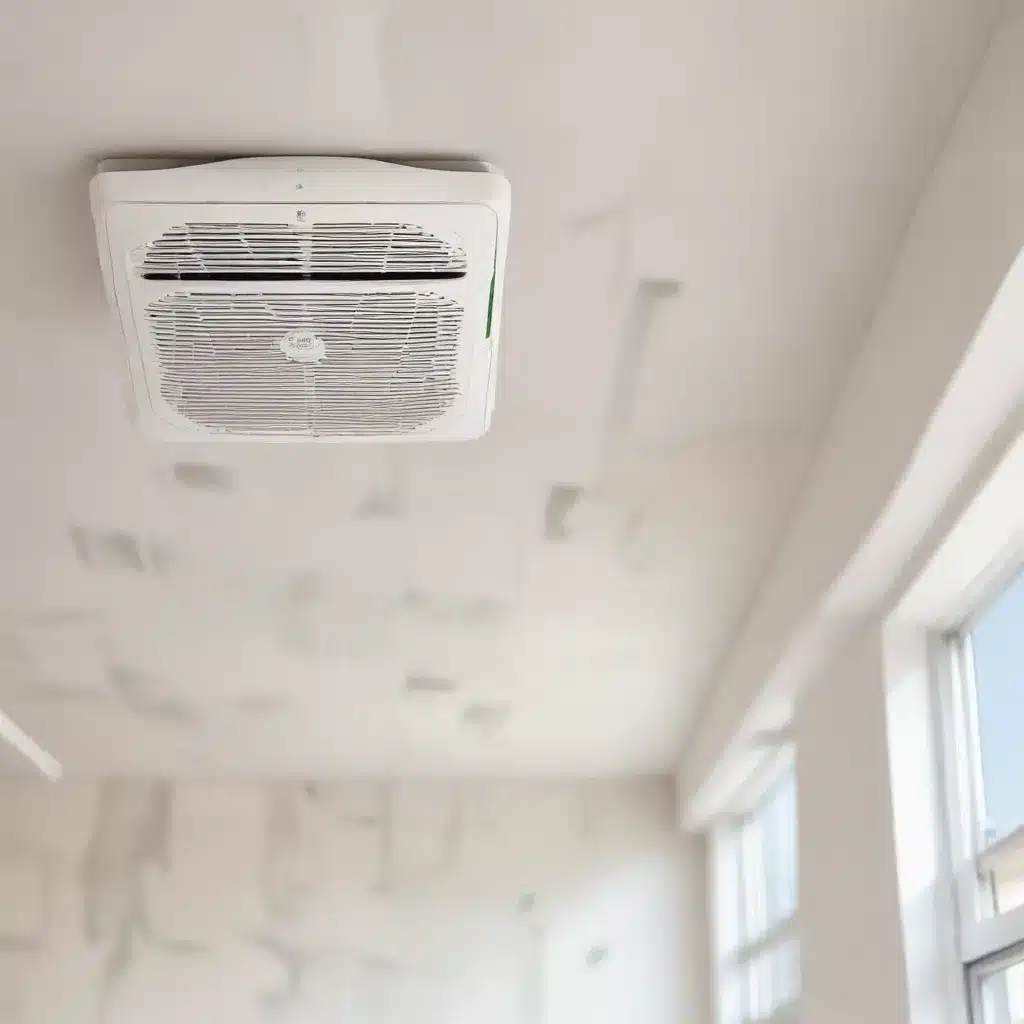
The Importance of Clean Indoor Air
The quality of the air we breathe indoors has a significant impact on our health, well-being, and ability to fully participate in our daily lives. Over the past few years, the COVID-19 pandemic has highlighted the crucial role of clean indoor air as a vital tool for response and recovery. Studies have shown that improving ventilation and air filtration can reduce the transmission of COVID-19 by up to 80%.
But clean indoor air offers benefits that extend far beyond just reducing the spread of infectious diseases. It can also improve cognitive function and productivity, protect against outdoor air pollutants, and decrease the number of environmental triggers for conditions like asthma and allergies. Importantly, access to clean indoor air is also a matter of equity and environmental justice, as low-income communities and communities of color are more likely to live in areas with higher outdoor pollution and in older buildings without good air cleaning systems.
Strategies for Improving Indoor Air Quality
There are three main strategies for improving indoor air quality: source control, ventilation, and air cleaning. Typically, the most effective approach is to eliminate or reduce the source of indoor air pollutants.
Source Control
Source control involves sealing or enclosing sources of pollution, such as those containing asbestos, or adjusting the operation of sources like gas stoves to decrease emissions. This is often a more cost-effective solution than increasing ventilation, which can increase energy costs.
Ventilation
Another way to lower indoor air pollutant levels is to increase the amount of outdoor air coming into the home. This can be done by opening windows and doors, running exhaust fans, or using mechanical systems that bring in fresh air. Proper ventilation is especially important when engaging in activities that generate high levels of pollutants, such as painting, cooking, or home maintenance.
Air Cleaning
Air cleaners can also be used to reduce indoor air pollutants. There are many types of air cleaners on the market, ranging from relatively inexpensive table-top models to sophisticated whole-house systems. The effectiveness of an air cleaner depends on its ability to collect pollutants and the rate at which it circulates air. It’s important to maintain air cleaners according to the manufacturer’s instructions for them to continue working effectively.
Indoor Air Quality Sensors and Ventilation Improvements
One important tool for improving indoor air quality is the use of air quality sensors. These devices can help identify problem areas and monitor the effectiveness of any ventilation or air cleaning efforts. Some key considerations when using air quality sensors include:
- Particle Sensors: These measure the concentration of particulate matter (PM) in the air, which can include dust, pollen, smoke, and other airborne particles.
- Carbon Dioxide (CO2) Sensors: CO2 levels can be used as an indicator of how well a space is ventilated, as higher levels suggest stale air.
- Volatile Organic Compound (VOC) Sensors: VOCs are emitted from many common household products and can contribute to poor indoor air quality.
By using these sensors, you can get a clear picture of the air quality in different rooms and make targeted improvements. For example, if a sensor shows high CO2 levels in a bedroom, you may need to increase ventilation in that space.
In addition to air quality sensors, there are several ventilation upgrades that can help improve indoor air quality:
- Mechanical Ventilation Systems: Advanced HVAC systems that bring in fresh outdoor air and remove stale indoor air can be a game-changer for indoor air quality. This includes systems like heat recovery ventilators (HRVs) and energy-efficient air handlers.
- Exhaust Fans: Properly installed and used exhaust fans in bathrooms, kitchens, and other high-moisture areas can help remove pollutants and excess humidity.
- Window Fans: Strategically placed window fans can create a cross-breeze, flushing out stale indoor air and bringing in fresh outdoor air.
When making ventilation improvements, it’s important to carefully consider the potential for introducing outdoor pollutants, such as smoke or smog, and to balance the need for fresh air with energy efficiency.
Taking Action: Resources and Funding
Improving indoor air quality doesn’t have to be a daunting task. There are many resources available to help individuals, families, and communities take action.
The Stanley Park High School website offers a wealth of information and guidance on indoor air quality, including tips for reducing common indoor pollutants, selecting and maintaining air cleaners, and understanding ventilation best practices.
Additionally, federal funding through the American Rescue Plan can be used to make indoor air quality improvements in schools, public buildings, and other community spaces. This includes upgrades to HVAC systems, the installation of air cleaners, and other ventilation enhancements.
By taking advantage of these resources and funding opportunities, we can work together to ensure that everyone in our community has access to clean, healthy indoor air. This is not only a vital tool for responding to the COVID-19 pandemic, but it also supports overall health, well-being, and equity.
Conclusion
Clean indoor air is essential for our health, productivity, and ability to fully participate in our daily lives. By implementing strategies like source control, improved ventilation, and the use of air quality sensors, we can create healthier indoor environments that benefit everyone.
The Stanley Park High School community is committed to supporting these efforts and providing resources to help families and staff make meaningful improvements. Together, we can breathe easier and build a healthier, more equitable future for all.

